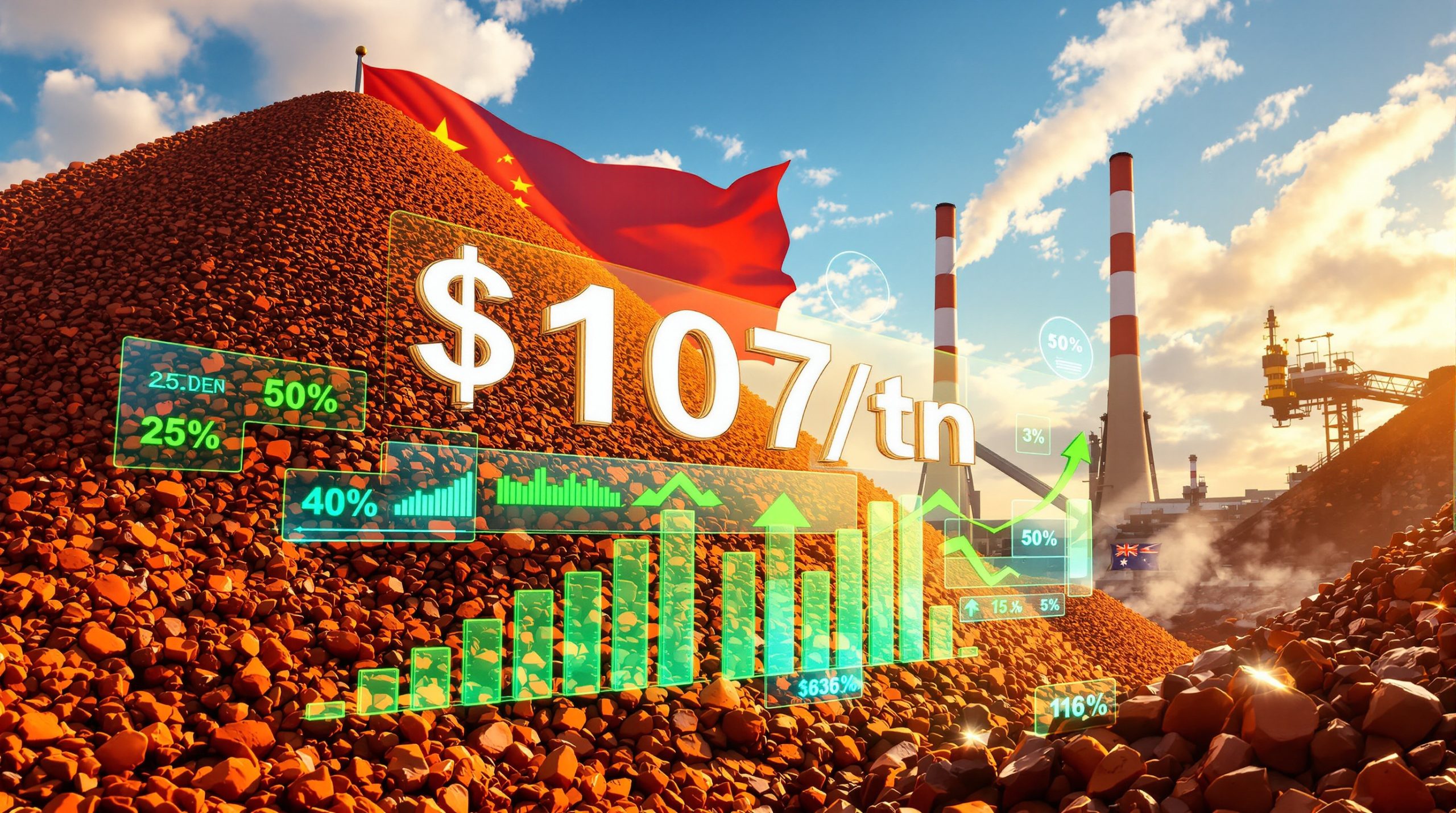Why Is China Rapidly Increasing Its Gold Reserves?
China's central bank has embarked on a remarkable gold acquisition strategy that has caught the attention of global financial markets and analysts. This intensifying focus on building China and gold reserves represents a significant shift in China's approach to managing its vast foreign exchange holdings.
The Six-Month Gold Acquisition Streak
The People's Bank of China added 70,000 troy ounces of gold to its reserves in April 2023, continuing an impressive accumulation streak. Over six consecutive months, China has added nearly 1 million ounces to its national gold reserves, demonstrating a deliberate and sustained strategy rather than opportunistic buying.
This gold-buying spree is particularly noteworthy as it comes during a period when gold prices analysis shows values hovering near historic highs. Despite elevated prices that might deter typical buyers, China has shown unwavering commitment to its gold acquisition plan.
The Shanghai Futures Exchange has recorded unprecedented gold trading volumes during this period, indicating increased domestic interest in the precious metal that aligns with the central bank's strategy. This surge in trading activity suggests a broader national movement toward gold as a strategic asset.
Market analysts have characterized China's gold purchases as a "structural move" – a fundamental shift in reserve asset allocation strategy that is unlikely to reverse in the near term. This assessment suggests China views gold not just as a tactical investment but as a long-term strategic holding.
Economic Policy Context Behind the Gold Rush
China's gold accumulation coincides with broader monetary easing measures implemented by Chinese authorities. The central bank has reduced policy rates to stimulate economic activity amid challenging global and domestic conditions.
The relaxation of bank reserve requirements has been another key component of China's economic strategy, designed to increase liquidity in the financial system. This multi-faceted approach indicates a comprehensive economic policy framework in which gold plays an increasingly important role.
Interestingly, China's accelerated gold purchases have been timed alongside scheduled economic discussions with US officials. This timing may reflect China's desire to strengthen its economic position and leverage during these high-level negotiations.
Financial experts note that China's gold strategy should be viewed within the context of its broader economic rebalancing efforts, which aim to reduce dependency on the US dollar while maintaining stable growth amid global uncertainties.
What Drives China's Strategic Shift Toward Gold?
Beyond the immediate economic context, several deeper factors are driving China's pivot toward gold as a core component of its national reserves. These motivations combine both defensive and strategic elements as China positions itself in the evolving global economic order.
Geopolitical and Economic Uncertainty Factors
Escalating international trade tensions have created unprecedented market volatility in recent years. China's increased gold holdings serve as a buffer against this uncertainty, providing stability to its reserve portfolio during turbulent times.
Global economic instability, exacerbated by pandemic aftershocks and geopolitical conflicts, has reinforced gold's traditional role as a safe-haven asset. China appears to be following the time-tested wisdom of diversifying into gold during periods of systemic stress.
Perhaps most significantly, China's gold acquisition represents a potential currency diversification strategy aimed at reducing dollar dependency. As the world's second-largest economy, China has strategic interests in gradually decreasing its exposure to US monetary policy decisions.
The strengthening of national reserves against potential economic shocks appears to be a primary motivation, particularly as international tensions rise and global financial vulnerabilities become more apparent.
Expert Analysis on China's Gold Strategy
Goldman Sachs has provided notable assessment of commodity market trends that help contextualize China's moves in the gold market. Their analysis suggests China's actions reflect both defensive positioning and forward-looking strategy.
Financial analysts broadly agree that China's systematic gold purchases represent more than tactical market timing. Rather, they point to a fundamental reassessment of gold's role in national reserves that will likely persist regardless of short-term price movements.
Historical patterns of reserve diversification by major economies offer useful parallels. During previous periods of monetary uncertainty, such as the 1970s collapse of the Bretton Woods system, central banks similarly adjusted their gold holdings to hedge against currency instability.
What distinguishes China's current strategy is both its scale and consistency. Unlike sporadic or opportunistic purchases, China's steady accumulation suggests a carefully calculated long-term plan to restructure its reserve assets.
How Does China's Gold Strategy Impact Global Commodity Markets?
China's substantial gold purchases are creating ripple effects across commodity markets, particularly affecting related metals like copper that are influenced by similar macroeconomic factors and Chinese demand patterns.
Copper Market Correlation and Forecasts
Goldman Sachs has notably revised its copper price forecast upward in response to changing market conditions, many of which relate to China's economic stance. Their new forecast puts copper at $9,150-$9,330 per ton for Q2-Q3, a significant increase from their previous projection of $8,370-$8,620.
This upward revision reflects anticipated depletion of global copper inventories, driven in part by increased US import activity. The tightening supply situation creates a market dynamic that discourages speculative short positions.
Market analysts note that potential demand fluctuations in the second half of the year could be influenced by US tariff considerations. However, the underlying strength in copper markets appears resilient due to structural supply constraints and China's continued industrial demand.
The correlation between gold and copper markets highlights how China's commodity strategy extends beyond precious metals to industrial metals that support its manufacturing and infrastructure development objectives.
Gold Market Dynamics and Price Implications
China's substantial gold purchases are undoubtedly influencing global gold prices, creating consistent buying pressure that supports price levels. As one of the world's largest gold consumers and producers, China's central bank purchases have an outsized impact on market sentiment.
Investor behavior following China's reserve announcements often shows a pattern of increased gold allocation, as market participants interpret China's moves as validating gold's status as a premier reserve asset. This creates a self-reinforcing cycle that can support gold prices.
In comparison with other central banks' gold acquisition strategies, China's approach stands out for its persistence and scale. While many central banks have increased gold holdings in recent years, few have demonstrated China's level of commitment to systematic acquisition.
The long-term gold price outlook suggests that China's consistent buying may establish a higher floor for gold prices. Some analysts suggest that China's purchases have effectively reduced gold price volatility by absorbing supply that might otherwise pressure markets during corrections.
What Are the Global Mining Industry Security Challenges?
As nations race to secure vital mineral resources, the mining industry faces escalating security challenges that threaten supply chains and complicate investment decisions, particularly in politically unstable regions.
Rising Risks in African Mining Operations
A recent attack on a mining equipment convoy at Allied Gold's Sadiola mine in Mali dramatically illustrates the security challenges facing mining operations in certain regions. The incident resulted in the destruction of two trucks and damage to excavation equipment.
Thieves also stole two pickup trucks during the attack, demonstrating the multiple threats facing mining companies, from destruction of assets to theft of valuable equipment. Fortunately, eight Nimber employees escaped the incident without injuries.
Such security incidents impose significant direct costs through equipment replacement and operational disruptions. However, the indirect costs in terms of increased security measures, insurance premiums, and risk assessment can be even more substantial over time.
Mining companies operating in high-risk regions must now budget for extensive security provisions that were unnecessary in previous decades, fundamentally altering project economics and investment decisions.
Broader Security Trends Affecting Mining Investments
The intensification of militant group activities across the Sahel region has created an increasingly challenging environment for mining operations. This deteriorating security situation affects multiple countries and numerous mining projects simultaneously.
Canadian gold miner Fortuna's decision to exit Burkina Faso, citing security concerns, exemplifies the difficult choices mining companies face when security risks exceed acceptable thresholds. Such corporate exits can leave mineral resources undeveloped despite their economic potential.
Risk assessment considerations for mining operations in politically unstable regions have become increasingly sophisticated, with companies developing detailed security protocols and evacuation plans that were once considered exceptional but are now standard practice.
The impact of security threats extends beyond individual companies to affect global mineral supply chains and pricing. When production is disrupted or investments are deterred due to security concerns, the resulting supply constraints can drive up prices for affected commodities.
How Are Nations Securing Critical Mineral Supply Chains?
In response to growing recognition of critical minerals as strategic assets, nations are developing new partnerships and investment strategies to ensure secure supply chains for essential resources.
Saudi Arabia's Strategic Mining Initiatives
Saudi Arabia is advancing a planned mining cooperation agreement with the United States as part of its broader economic diversification efforts. The Saudi cabinet has authorized the Minister of Industry and Mineral Resources to negotiate this important bilateral arrangement.
This initiative aligns perfectly with Saudi Vision 2030, the kingdom's ambitious economic diversification strategy aimed at reducing its historical dependence on oil revenues. Mining industry evolution represents a key pillar in building a more diverse and resilient Saudi economy.
The kingdom's strategy involves not just extracting raw materials but developing processing capabilities and manufacturing capacity to capture more value from mineral resources. This vertical integration approach aims to create jobs and develop new economic sectors.
By pursuing international partnerships, Saudi Arabia is leveraging foreign expertise while maintaining control over its natural resources, creating a model that balances national interests with the benefits of global collaboration.
International Mineral Partnerships and Investments
Ongoing discussions between Saudi officials and Chile's Codelco regarding copper investments highlight the global nature of modern mineral security strategies. These talks could result in significant Saudi investments in one of the world's premier copper-producing nations.
Saudi Arabia is also exploring lithium import opportunities for domestic processing, recognizing this metal's critical importance for battery technology and the critical minerals energy transition. This forward-looking approach positions the kingdom to participate in fast-growing technology sectors.
The development of raw material supply chains to support manufacturing ambitions requires both upstream investments in extraction and downstream investments in processing and production. Saudi Arabia's comprehensive approach addresses both ends of this value chain.
Similar international mineral security agreements are becoming increasingly common as nations recognize that no single country possesses all the critical minerals needed for modern technologies. These collaborative arrangements help mitigate supply risks while respecting national sovereignty.
What Progress Is Being Made in North American Critical Minerals Production?
North America is making significant strides in developing domestic sources of critical minerals to reduce dependency on foreign suppliers and strengthen industrial resilience.
Rio Tinto's Gallium Production Breakthrough
Rio Tinto has achieved a significant milestone with the successful extraction of its first primary gallium batch from bauxite, marking an important step toward developing North American sources of this critical mineral. The processing was conducted at their Quebec alumina refinery.
This initiative involves collaboration with Indium Corporation at their New York R&D facility, combining Rio Tinto's mining expertise with Indium Corporation's specialized knowledge of these technical metals. This partnership exemplifies the cross-border collaboration strengthening North American mineral security.
The project has now advanced to the pilot phase for production scalability assessment, a crucial step in determining commercial viability. This methodical approach ensures technical feasibility before larger investments in full-scale production.
Gallium is classified as a critical mineral due to its essential role in semiconductor manufacturing, particularly for applications in 5G technology, LED lighting, and defense systems. Developing domestic sources reduces vulnerability to supply disruptions from overseas.
Government Support for Critical Mineral Development
The potential construction of a demonstration plant in Quebec represents the next phase in developing North American gallium production capacity. This facility would validate production processes at a larger scale while generating product for market development.
Government support has been instrumental in advancing this initiative, with a funding commitment of up to $4.9 million. This public-private partnership approach helps mitigate the financial risks associated with developing new mineral supply chains.
The strategic importance of establishing North American gallium supply cannot be overstated, as current production is heavily concentrated in a few countries. This concentration creates vulnerability to supply disruptions that could affect critical industries.
Gallium's applications in semiconductor and technology manufacturing make it essential for both economic competitiveness and national security. As countries increasingly view critical minerals through a strategic lens, initiatives like Rio Tinto's gallium project take on additional significance.
FAQ: China's Gold Reserves and Global Implications
How much gold does China currently hold in its reserves?
China's official gold reserves have grown significantly with the addition of nearly 1 million ounces over a recent six-month period. The People's Bank of China has been systematically increasing its holdings, adding 70,000 troy ounces in April 2023 alone.
While China publicly reports its gold reserves, many analysts believe the actual holdings may exceed officially disclosed figures. Some estimates suggest China's true gold reserves could be substantially higher than reported, as the country may accumulate through various state entities before transferring to official reserves.
Compared to other major economies, China ranks sixth globally in official gold reserves, behind the United States, Germany, Italy, France, and Russia. However, China's gold reserves as a percentage of its total foreign exchange reserves remain relatively low, suggesting potential for continued accumulation.
The strategic significance of China and gold reserves extends beyond their absolute value. As China works to internationalize the yuan and reduce dollar dependency, gold provides a universal reserve asset that is not tied to any specific national currency.
Why are countries increasing their gold reserves during economic uncertainty?
Gold has historically served as a safe-haven asset during periods of economic turmoil, maintaining value when currencies and other financial assets face volatility. Central banks typically increase gold holdings when they anticipate financial instability or currency fluctuations.
As a hedge against inflation, gold often performs well when monetary policies lead to currency devaluation. With many central banks engaged in monetary easing in recent years, gold offers protection against the potential inflationary consequences of these policies.
Gold's status as a store of value that is not simultaneously another country's liability makes it uniquely valuable in a world of fiat currencies. Unlike bonds or currencies, gold cannot be devalued through monetary policy decisions or default risks.
Central banks also value gold's liquidity and universal acceptance. In crisis situations, gold remains tradable when other markets may freeze, providing central banks with an asset they can mobilize if necessary.
How do central bank gold purchases affect global gold prices?
Large-scale sovereign gold acquisitions create significant demand pressure in the gold market, particularly when purchases are systematic rather than opportunistic. China's consistent buying has likely contributed to gold's price resilience even during periods when investment demand has fluctuated.
Central bank purchases often have an outsized psychological impact on markets beyond their direct volume effect. When major central banks like China's increase gold reserves, private investors frequently follow suit, creating a multiplier effect on demand.
Price support mechanisms emerge when major buyers demonstrate commitment to regular purchases regardless of short-term price movements. This creates an implicit floor for gold prices, as market participants anticipate consistent demand from these institutional buyers.
The impact of central bank buying varies depending on whether purchases are made publicly or discreetly. China's approach of announcing additions after they occur allows them to accumulate without driving up prices during the acquisition period.
What are the implications of China reducing its US Treasury holdings?
A shift from US Treasuries to gold would represent a significant diversification of China's foreign exchange reserves, potentially reducing its exposure to dollar-denominated assets. This rebalancing would have both financial and geopolitical implications.
Reduced Chinese demand for US government debt could theoretically put upward pressure on US interest rates if other buyers don't compensate. However, the deep liquidity of the Treasury market means this effect might be gradual rather than sudden.
De-dollarization strategies employed by China and other nations seeking to reduce dollar dependency generally include increasing gold reserves as one component of a broader approach. Gold serves as a neutral alternative to dollar assets.
For the global financial system, a gradual shift in reserve composition among major economies could eventually alter currency dynamics and international payment systems. However, such changes typically evolve over decades rather than years.
Key Takeaways: Global Mining and Mineral Security Trends
| Trend | Impact | Strategic Significance |
|---|---|---|
| China's gold accumulation | Support for gold prices | Reduced dollar dependency |
| Rising security risks in Africa | Mining company exits | Supply constraints for certain minerals |
| Saudi-US mining cooperation | New supply chain development | Diversification from oil dependency |
| North American critical mineral production | Supply chain resilience | Reduced dependency on foreign sources |
| Copper price increases | Higher input costs | Potential economic growth constraints |
Expert Insight: The shift toward strategic mineral security represents a fundamental restructuring of global resource politics, with nations increasingly viewing critical minerals as essential components of economic sovereignty and national security.
Future Outlook: Gold, Critical Minerals, and Global Economic Power
Emerging Trends in National Resource Strategies
Nations are increasingly integrating mineral security with broader economic policy, recognizing that access to critical resources underpins both economic growth and national security. This holistic approach represents a departure from treating minerals as purely commercial commodities.
The development of domestic processing capabilities for critical minerals has become a priority for advanced economies seeking to reduce dependency on foreign processing. This vertical integration reduces vulnerability to supply chain disruptions and captures more economic value.
Strategic alliances to secure mineral supply chains are proliferating, often forming along geopolitical lines. These partnerships create resilience through diversification while maintaining access to resources that no single country can supply entirely from domestic sources.
Investment in exploration and production technologies is accelerating as countries seek to overcome geological constraints and develop resources previously considered uneconomical. These technological advances may reshape the map of mineral production in coming decades.
Long-Term Implications for Global Economic Balance
Potential shifts in currency dominance and reserve asset preferences may gradually emerge from
Ready to Spot the Next Major ASX Discovery?
Discovery Alert's proprietary Discovery IQ model instantly notifies investors of significant mineral discoveries, turning complex announcements into actionable insights for both short and long-term investment opportunities. Visit our discoveries page to understand why historic mineral discoveries have generated substantial returns and start your 30-day free trial today.




